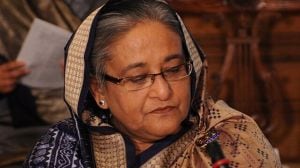Tracing The Song Lines
...

|
|
| Society and Circulation Mobile People and Itinerant Cultures in South Asia, 1750-1950 Permanent Black Price: Rs 695 |
The received wisdom on Indian society in the mid-eighteenth and early nineteenth century is a land sunk in Mughal decline, with dull unchanging villages and slothful oriental despots waiting sleepily to be awakened by the railways and roads of colonial rule. Sanjay Subrahmanyam, the enfant terrible of all eighteenth century stereotypes, has, along with Claude Markovits and Jacques Pouchepadass, produced an edited volume that not only disproves the myths of unchanging India, but also shows that South Asia from 1750 to 1950 has been a mobile, transactional and busy place, with colonial rule often hindering rather than facilitating circulation.
‘Circulation’ is defined as not only the migration between different ecosystems within the subcontinent such as between ‘dry zones and ‘wet zones’ but also of migrations across the seas, and the broader notion that ‘change’ was not as ‘foreign’ to pre-colonial India as it is commonly believed.
G. Balachandran writes how Indian seamen were dashing about the world and many were employed manning artillery guns on British and Portuguese ships. Neeladri Bhattacharyya delineates the predicaments that itinerant peddlars faced and shows how peddlars carried cotton goods from Delhi all the way to the North-West and to Bengal and Bihar.
In the songs of Bhojpuri peddlars, Catherine Servan-Schreiber finds the exaltation of the migrant, of a travelling way of life, which, once transcribed as vernacular texts and printed in Fort William College in Calcutta, also contributed to the process of building a wider ‘imagined community’.
Subrahmanyam’s earlier work has sought to prove that Indian historiography needn’t begin only from the colonial era as if the 18th century after the decline of the Mughals never existed at all. His statements such as ‘official secularism is a cul de sac’ have hardly won him many friends among the progressive Left. He has also departed from post-modernism in his belief that western thought was not systematically ‘imposed’ on a passive India. Indeed, this volume provides evidence of a constant circulation of ideas, practices and personnel between ‘India’ and ‘The West’.
In ‘Circulation and the Emergence of Modern Mapping’, Kapil Raj attacks the notion that cartography was a purely western invention and writes, “Quantitative terrestrial surveying was as commonly practised in South Asia as it was in Britain in the pre-colonial period and in both cases linked to the fiscal, administrative and military needs of the respective regimes.” In the exchange of knowledge between coloniser and colonised, it is difficult to find straight examples of dominance of the colonial power or of ‘indigenous’ knowledge systems, instead at every level, skills and instruments were locally negotiated.
That globalisation is not an intruder into Indian history and that India’s had a 400-year-old history of global trade has already been pointed out by many historians. In this volume, we not only find the ancestors of the contemporary diaspora but also of self-aware tourism. The quest for an Indian ‘modernity’ has been one of Subrahmanyam’s pre-occupations. Markovits’ essay on merchant migration and Subrahmanyam’s own on literature of travel, notably the impressive perambulations of the Brahmin widow Adi Lakshmi who journeyed from Madras to Benares, reveal patterns of circulation that were carried out by curious, rational and ‘modern’ actors.



- 01
- 02
- 03
- 04
- 05




























